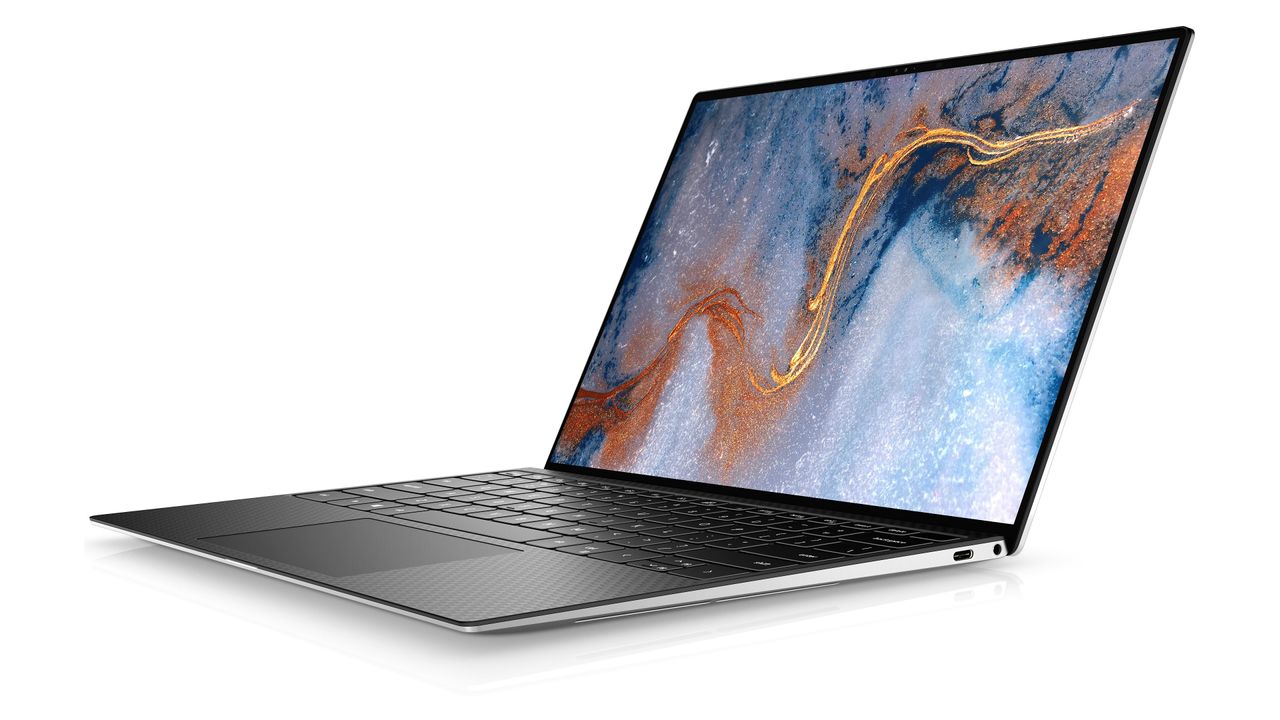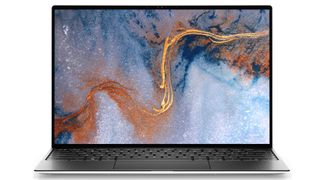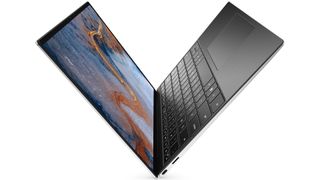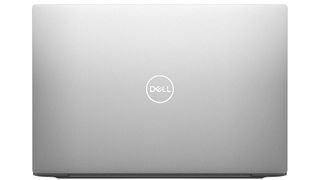Dell XPS 13 review (9310): Ultrabook beauty powers up with Tiger Lake
Now Evo-certified with Intel's faster i7-1165G7 processor, is this high-end laptop worth your money? Our Dell XPS 13 review reveals all.


With eye-catching good looks, a gorgeous display and excellent build quality, the Dell XPS 13 is one of the finest ultrabooks on the market today. And addition of a faster processor makes this upgraded version capable of resource-heavy tasks such as Photoshop, video editing, and playing many AAA titles.
-
+
Stunning looks
-
+
Fantastic screen
-
+
High-end performance
-
-
Average audio
-
-
Limited ports
Why you can trust T3
Here at T3, we’ve been raving about the Dell XPS 13 for some time now. It's on our lists of the best lightweight laptops and the best student laptops, as well as been a perennial favourite in our best laptops guide, too.
Recently, when reviewing the previous incarnation of the Dell XPS 13, we said it was "one of the world’s best systems". So with this newer version in our hands we were naturally super-excited to take it for a spin.
Yet despite our enthusiasm, we wanted to keep our feet on the ground. This configuration of the ultrathin Windows laptop costs extra, which bumps the price up by a couple of hundred dollars / pounds, and even more if you want a 4K screen rather than Full HD. That's a serious amount of cash. So what exactly are you getting for the money?
In short: there’s one small but very significant change in this version: a more powerful processor from Intel’s 11th Generation Tiger Lake line, namely the Intel Core i7-1165G7. This promises to offer better performance, better graphics and longer battery life.
Is the Dell XPS 13 (9310) worth buying even in 2024? Let's find out.
Dell XPS 13 review: Design
The Dell XPS 13 is quite stunningly beautiful. That may sound like hyperbole, but hand on heart: this ultrathin laptop has ‘wow-factor’ looks that are certainly on a par with, say, a MacBook Pro. In fact, we’d wager some people will buy it for its aesthetic appeal alone. Basically, take this into a meeting, and colleagues and clients will know you mean business.
Constructed from two blocks of CNC-machined aluminum, and imprinted with a stainless steel Dell logo, this slimline laptop is just 14.8 mm (0.58 inches) at its thickest. Yet with a 1.27 kg (2.8 lb) weight, it doesn’t feel flimsy, but solid and robust. One sign of that is how you can easily open the laptop with one hand, without having to hold the base down. It’s a bit of a surprise when you realise you can do this, quite frankly, given how thin the laptop is.
At 296mm (11.6-inch) wide x 199mm (7.8-inch) tall, we feel the Dell XPS 13 is a good size that functions well and looks professional without being too bulky. In short, you’re happy to throw it into a briefcase or laptop bag at moment’s notice, but you won’t ever forget it’s there.

The chiclet keyboard stretches almost from edge to edge, and the keys are nice and big, with an attractive, soft-white backlight behind them. On the downside, there’s no number pad, and the up/down arrow keys at the bottom right are kind of tiny. For that reason alone, we’d suggest this laptop isn’t a good choice for serious gaming.
Below there’s a large-ish (64 x 114mm/2.5 x 4.5 inches) glass touchpad, which gives a satisfyingly solid click. It’s also worth mentioning that the rest of the base isn’t solid black, like you’d expect on a cheaper laptop, but a woven glass effect that adds an extra touch of sophistication.
There’s also a tiny webcam at the top, which you can use with Windows Hello to log in with a face scan. Finally, there's a fingerprint scanner which you wouldn’t know was there if you weren’t told, as it’s neatly integrated into the black power button on the top right of the keyboard.
Dell XPS 13 review: Screen and speakers
The base model of the Dell XPS 13 comes with a 13.4-inch Full HD (1,920 x 1,080) touchscreen which has a 16.10 aspect ratio. That’s a slight (but not really significant) variation from the 16:9 ratio of most computer screens and TVs. Made from Corning Gorilla Glass, it’s glare-, impact- and scratch resistant too.
For extra spend, however, you can upgrade this to a 4K screen (3,840 x 2,400 pixels), which is the display our review unit came with. That's a lot of extra money, but quite frankly it’s gorgeous. This is one of the nicest Windows laptop screens we've seen to date.
The colours are deep, rich and vibrant. The detail is pin-sharp. And the 500 nits of brightness means you can happily use this laptop outdoors, even in fairly bright light. In fact, when you’re at home or in the office, you may want to turn it down a little.

One final thing worth noting about the screen is that the bezel surrounding it is so minimal as to be non-existent. In our view, that’s a good thing, providing maximum screen within the chassis, but it is a matter of taste. Another potential niggle is how some websites, such as msn.com, appeared slightly cut off at the sides, forcing us to resize the browser window. That said, the fact such tiny details stand out is testimony to how, overall, this display is just fantastic.
The audio isn’t perfect, but it’s pretty good. It's always annoying when speakers are mounted at the bottom of a laptop, sending the sound in the wrong direction. But here, they’re at least set close to the edge, so the vibrations have somewhere to go when the device is on your lap. And the sound itself is deep and full, with a toned bass that makes listening to music and watching films a pleasure. It’s more than loud enough too, filling a room at just 25 per cent of the available volume.
Dell XPS 13 review: Performance
The Dell XPS 13 model we were given to review boasts an Intel Core i7-1165G7 processor, which boasts four cores and eight threads, with a turbo clock speed of 4.7GHz, 12MB of Smart Cache and Intel Iris Xe integrated graphics.
Sounds good in theory... yet in practice powerful chips don’t always translate into the performance you expect. It’s all about how cleverly they play with the rest of the components in a system.
So it’s a good sign that this laptop comes with an Evo badge. That’s part of Intel’s certification program, which signifies that Dell worked closely with Intel to develop this device and squeeze maximum power out of the processor.

And in practice, the i7-1165G7 does seem to give a significant boost to speed, efficiency, and graphics performance. Our Dell XPS 13 managed multiple complex tasks simultaneously, including downloading video, running multiple tabs, playing music and instant messaging, without any obvious problems... well, most of the time, anyway.
We did run into an issue when using the device on our actual lap for a couple of hours: namely, slow web browsing that seemed to be down to overheating. It's a common problem with ultrabooks, as there's nowhere really for the heat to go, so we'd be cautious if you mainly want to use your laptop in this manner.
Placed on the desk, though, things were fine, and we even ran resource-hungry software like Photoshop without a hitch. And while this is no gaming laptop, the i7-1165G7 works well enough with the Intel Iris Xe Graphics chip to run most AAA titles, as long as you compromise on frame-rates.
We'll be honest: if you just want a laptop for casual use – browsing the web, using Office software, streaming videos and music – the basic configuration of the Dell XPS 13 is going to be just fine, and you’ll be better off saving the money. But if you want to do some image editing, video post-production, gaming, or any other resource-intensive task, the extra oomph from the i7-1165G7 chip will be well worth the money.
Dell XPS 13 review: Battery life and connectivity
The i7-1165G7 configuration of the Dell XPS 13 doesn’t just make for better performance and graphics, it also increases the battery life. Not massively, so we wouldn’t recommend the upgrade for this reason alone. But it is a significant boost.
We used the laptop on batter alone for a range of day to day tasks, including document editing, web surfing and listening to music. By tweaking the settings appropriately, we managed 10 hours and four minutes, which was very impressive.
Meanwhile, running a downloaded Netflix movie on repeat, at maximum brightness and with sound going through headphones, the Dell XPS 13 kept going for a satisfying 9 hours and 28 minutes, which bodes well for anyone with a long train journey or flight in their future.
You can’t have everything though, and connectivity is the real Achilles' Heel of the Dell XPS 13, which offers just four ports. Let's face it, even for an ultrabook, that’s a bit limited.
Specifically, there are two USB Type-C Thunderbolt 4 ports, which gives you the choice of charging your laptop from either the left or right side, as well as the opportunity to connect to an external display. On the left side, there’s also a microSD card slot, while on the right, there’s a headphone-microphone jack.
And... that’s your lot. Nope, you don’t even get a USB Type-A port, although Dell does give you a USB-C to USB-A 3.0 adapter to meet you halfway.
Dell XPS 13 review: Verdict

Overall, the Dell XPS 13 (late 2020) is a premium Windows laptop with a huge amount to offer. Battery life is healthy. The screen is quite incredible. Its sleek good looks are also a big plus. And all the little details are well thought through, from the satisfying click of the touchpad to the responsiveness of the touchscreen. What's more, when configured with the i7-1165G7 processor, it’s capable of pretty much anything you can throw at, even most AAA games on tweaked settings.
Of course, no laptop is perfect, and there are some compromises to be made. In particular, connectivity is very limited, audio is only slightly better than average, and the price of the full configuration could be a little lower. We'd also be wary of leaving it sat on your lap for long periods of time. But on the whole, if you want a premium ultrabook that runs Windows, this is quite simply one of the best buys around, and comes highly recommended.
- Best Dell laptops to buy today
Sign up to the T3 newsletter for smarter living straight to your inbox
Get all the latest news, reviews, deals and buying guides on gorgeous tech, home and active products from the T3 experts
Tom May is a freelance writer and author of the book, Great Ted Talks: Creativity. He has been editor of Professional Photography magazine, associate editor at Creative Bloq, and deputy editor at net magazine. He has also worked for a wide range of mainstream titles including Radio Times, NME, Heat, Company and Bella.
-
 New Matter leak reveals exciting smart garden tools heading our way – a lot sooner than expected
New Matter leak reveals exciting smart garden tools heading our way – a lot sooner than expectedThat was pretty unexpected!
By Lizzie Wilmot Published
-
 HBO’s best sci-fi in recent memory returns for season 2 in just two weeks
HBO’s best sci-fi in recent memory returns for season 2 in just two weeksThe Last of Us season 2 airs on 13 April – I'm counting down the days
By Mike Lowe Published
-
 The travel gadget I won't leave home without just got an upgrade in the AirFly Pro 2
The travel gadget I won't leave home without just got an upgrade in the AirFly Pro 2As a frequent flyer, Twelve South's AirFly products are invaluable to me for wire-free listening with my own headphones
By Mike Lowe Published

